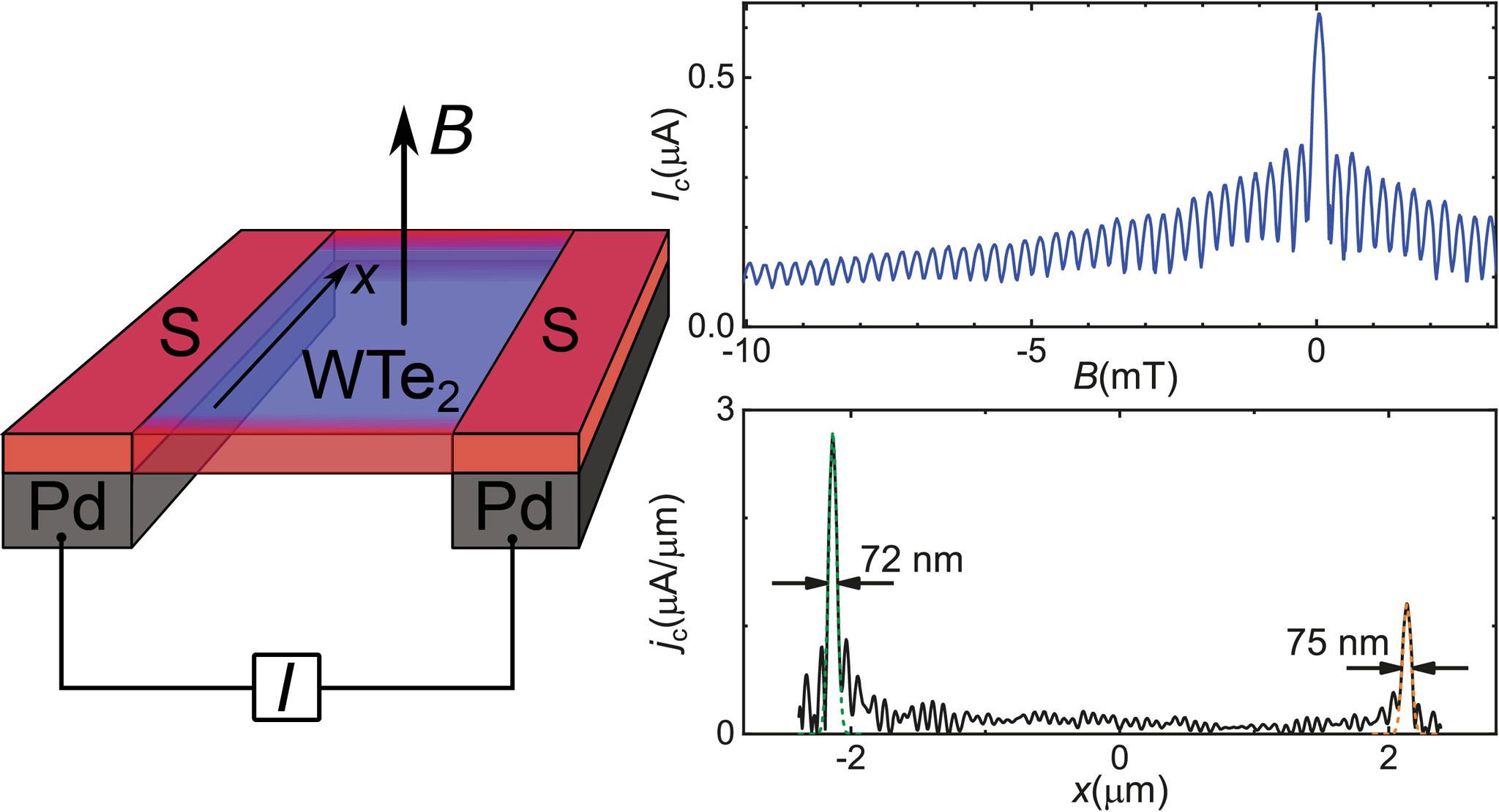suspended CVD graphene
One-dimensional edge transport in few-layer WTe2
In 2016 the Nobel Prize in Physics was given to three theorists who introduced a new state of matter, topological matter. A subclass is defined by topological insulators (TIs), which are crystals that are insulating in the bulk, but conducting on the surface. This surface conductivity is very high, the highest it can get, since it is protected from disorder by quantum mechanics. Several examples of these TIs are known by now. In the meantime, so-called second-order topological states have been predicted by theory. An example is bismuth, which is a semimetal and posses conducting channels along the rim where two crystal surface planes meet. These states also have excellent conductivity and are known as “hinge-states”, of which we know very little today.
In the work published in NanoLetters, the team around Dr. Artem Kononov, who is a Georg H. Endress fellow at the Department of Physics of the University of Basel since 2018, found strong evidence for hinge-states in another semimetal, in WTe2. The team used thin crystals that consist only of a few layers, from 1 to ~20. Since the material is very sensitive to oxidation, it is prepared in a special glove-box where the oxygen content is very low and where the thin crystal is covered by another thin crystal of a material that is stable in air. For electrical characterization, superconducting contacts were added. The team then analyzed the supercurrent flowing in the crystal when a magnetic field is applied. This method yields a picture of the current distribution in the crystal. To their great surprise, they found a very strong and strongly oscillating supercurrent, which suggests that a large fraction of current flows along edges.

“It is remarkable, that one can investigate material properties of edges in crystals down to the monolayer and that there are edges that conduct electrons without dissipation over long distances”, says Prof. Christian Schönenberger, who investigates topological superconductivity in stacks of two-dimensional van der Waal materials in his ERC project.
See also news-article-UBAS









